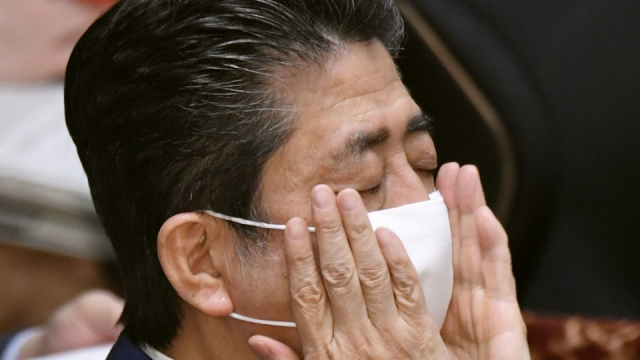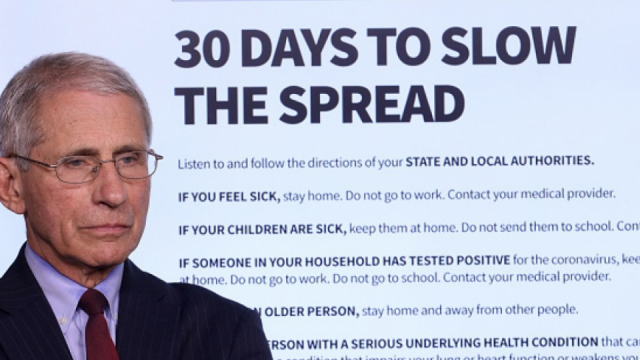As the coronavirus pandemic affects nearly every part of people’s lives, President Donald Trump continues to face a crucial leadership test as he pushes to reopen the shuttered U.S. economy ahead of the November election.
Trump on Thursday outlined a three-stage process for easing the restrictions imposed on individuals and businesses to contain the spread of the novel coronavirus, saying that he expects at least some parts of the country to get back to work relatively soon.
Reopening the country is a “hugely consequential” move for the election as the economic outlook this fall is likely to be a decisive factor in Trump’s re-election bid, said Paul Saunders, a senior fellow at the Center for the National Interest, a Washington-based think tank.
“The fundamental question here obviously is the trade-off between the economy and public health, and he’s been very forthright in making a case that he’s trying to protect the economy. If it looks like that works, and things come back better than people expect, then, I expect he’ll have the support certainly of his base and lots of other Republicans,” Saunders said.
(U.S. President Donald Trump)
“The other direction that it can go obviously is the economy doesn’t bounce back, or the president kind of presses too hard to lift restrictions and that leads to a really bad second wave and then there’s kind of another shutdown,” he added.
While data has indicated that infections and deaths from the virus may be peaking in the United States amid social distancing efforts and the halt in economic activity, questions remain as to whether the country is prepared to be fully up and running.
Some health experts have warned that the country needs to beef up its virus testing capacity and ability to trace contact with infected people before workers can feel confident heading back to their jobs.
“A significant expansion of tests, testing, personal protective equipment and other medical supplies, and public health workers is still needed to reach the level of testing and surveillance necessary to safely reopen the country,” the Infectious Diseases Society of America said in a statement Thursday.
“Prematurely easing social distancing measures put in place to curtail the spread of COVID-19 will risk increased infections and deaths, incapacitated health care facilities, and prolonged economic hardships,” it also said.
 (Grand Central Terminal in New York City)
(Grand Central Terminal in New York City)
[Getty/Kyodo]
Trump has asserted that the country has built “the most advanced and robust testing anywhere in the world.” Meanwhile, economic pain from the containment measures has been mounting, with a staggering 22 million people in the United States filing for unemployment benefits in the four weeks ending on April 11.
Trump himself has also been under fire for initially downplaying the threat of the highly contagious virus, failing to quickly roll out testing and sometimes acting on his own political instincts rather than the expertise of scientists on his team.
“Within a couple of days (the number of cases) is going to be down to close to zero,” Trump said in late February. He also said in a meeting, “It’s going to disappear. One day — it’s like a miracle — it will disappear.” By the end of March, however, the United States became the country with the highest number of confirmed cases, according to a tally by Johns Hopkins University.
Less than two weeks after declaring a national emergency on March 13, Trump expressed his desire to have the country open up by Easter, which was last Sunday. But he ended up quickly retracting the goal, insisting that it was “just an aspiration.”
Trump, who pitches himself as a president “at war” with an invisible enemy, the virus, may have been expecting the “rally ’round the flag” effect, a boost seen in the public approval ratings of presidents during periods of crisis.
But his recent job approval rate, after hitting about 49 percent, which tied his personal best in some polls, has slipped despite his daily appearances at the White House coronavirus task force briefings, viewed by some critics as makeshift campaign rallies.
Support for Trump has also lagged behind that for former Vice President Joe Biden, the presumptive Democratic presidential nominee to challenge him in November, according to a one-on-one poll conducted in early April by Monmouth University in New Jersey.
Biden led Trump 48 percent to 44 percent, with the gap being around the same as in last month’s survey.
 (Former U.S. Vice President Joe Biden)
(Former U.S. Vice President Joe Biden)
“The static nature of these results suggests the president’s response to the pandemic is certainly not helping his reelection prospects,” Patrick Murray, director of the Monmouth University Polling Institute, said in a press release.
But whether Biden can fully capitalize on the situation may be another story, as the spread of the epidemic has also upended the Democratic presidential nomination process and made it difficult for him to rely on typical campaign methods such as rallies and other types of in-person events.
With many Democratic nomination contests postponed due to the virus, the 77-year-old Biden has been engaging in a “virtual” campaign from a recreation room at his home that has been converted to a television studio for hosting podcasts, participating in online events and appearing in TV interviews.
Biden has insisted that virtual campaigning would not necessarily put him at a disadvantage.
“With the new technology available, I think I’ll be able to reach and make my points across the board as well as I could if I were out during a big rally,” he said in a TV interview last month.
But Saunders suggested that Biden’s reduced visibility over a prolonged period may make it harder for him to appeal to voters who supported Trump in the 2016 election but have the potential to turn against the 73-year-old Republican this year.
“For Democrats, it’s all about opposing Trump and you’ve got to just elect whoever is going to keep Trump from being president. But for people in this other category, who are not Trump’s base but also cannot be counted on automatically to vote for a Democrat, there has to be something to get them off of their sofas to go and vote,” he said.
All in all, Trump’s fate could be falling into the hands of state governments, as the federal guidelines on easing social distancing restrictions set no specific timeline for reopening and leave the actual decision up to the governors.
“So I think how it’s handled (by the states) and how effectively the federal government works with the states” matters a lot, Saunders said.



